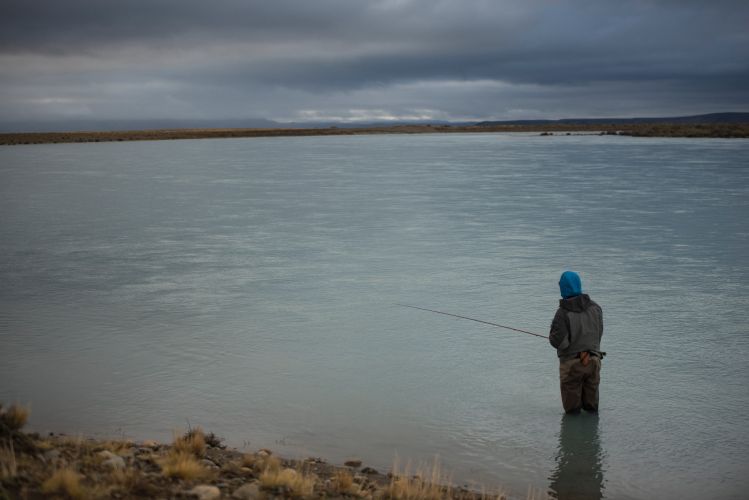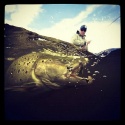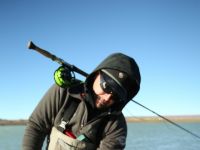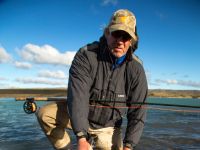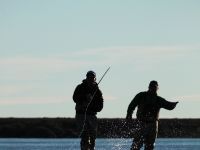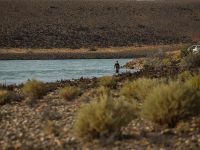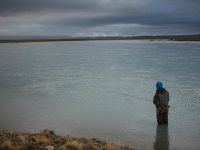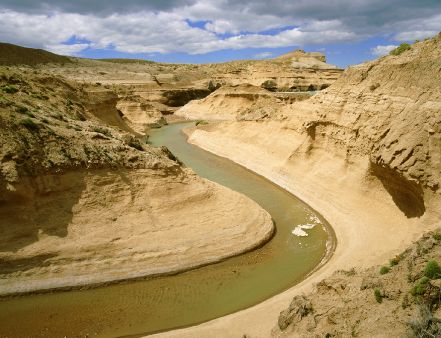From: 03/15/2018
To: 04/15/2018
Type of Water: Freshwater
Species: Steelhead
5 MUST TIPS ON: Steelheading the Santa Cruz river (Argentina).
1) Size and color of the water
2) Casting distance and Tackle
3) Flies
4) Fishing technique
5) Handling an Atlantic Steelhead
1) Don’t get stressed about the photos you may see. Maybe it looks colored for us, but it clearly doesn’t affect the fish from seeing your fly. The glacial sediment puts a steady milky color in the water but normally theres a perfect visibility of over 15 inches, and as the season goes it gets even better.
Atlantic Steelhead don’t like to swim necessarily by the middle of the river, and they tend to run along close to the banks so a fair 20 yd cast does the job most times. Also presentation is not an issue at all. They are territorial and noise only makes ‘em angrier!
Its blind fishing View more...5 MUST TIPS ON: Steelheading the Santa Cruz river (Argentina).
1) Size and color of the water
2) Casting distance and Tackle
3) Flies
4) Fishing technique
5) Handling an Atlantic Steelhead
1) Don’t get stressed about the photos you may see. Maybe it looks colored for us, but it clearly doesn’t affect the fish from seeing your fly. The glacial sediment puts a steady milky color in the water but normally theres a perfect visibility of over 15 inches, and as the season goes it gets even better.
Atlantic Steelhead don’t like to swim necessarily by the middle of the river, and they tend to run along close to the banks so a fair 20 yd cast does the job most times. Also presentation is not an issue at all. They are territorial and noise only makes ‘em angrier!
Its blind fishing as this fish randomly show, so its about covering water, in a solid way, looking for active fish. You might be covering the best spot, full of fish, but if they aren’t taking, well, change you fly and start again or move to another place. Casting hours to the same spot is not going to deliver any trophy.
2) As said before, the distance we try to cover isn’t huge. Despite of that the tools needed for the job are Spey rods between 7 and 9 weight according to the spots and skills of the angler of course. An 8 wt works all over anyway.
Lines used are Skatig heads (floating most of the time) with a variety of T-tips. The usual set up for Santa Cruz primetime starts with 12’ of T-14. For some other spots both lighter and heavier tips work perfectly well too, so a variety of tips is recommended. I-Mow tips help for the lighter tips just fine. One of our favorites is the 5’ intermediate with 5’ of T-14. Mono tippet suggested of 15-20 lb.
3) There’s a wide range of flies that will work for Santa Cruz. Normally any of the well known winter Steelhead patter you can find online (like Intruders, Egg sucking leeches, or any other like…) in a variety of colors is the choice. In our experience, and after 3 seasons running the Santa Cruz Atlantic Steelhead operation, our favorite colors are blue, black, purple, orange and pink. Orange/pink, as well as blue/black combinations are a killer! Most time a bit of weight helps getting there.
4) Here’s the tough part, or what most anglers don’t do from the very beginning –and should do to maximize results-.
The casting angle most times should be slightly upstream, like 15º, in order to be able to put a mend behind it and get the tip and fly straight down (only 1 mend… more will have opposite results). If not getting close to the bottom like that, well, a couple of steps downstream right after mending the line gives the extra couple of seconds for it to sink.
Once the line stretches out and the fly starts to “fish” we should be feeling the fly bouncing a bit on the bottom, no more, no less than that.
Most Steelhead will rest from the current -even in slower places- behind a stone that breaks it for him, so getting down is a must.
5) Most takes happen where said before, close to the bottom, and once that happens your reel will know it immediately. Steelhead will use the current to give a hell of a fight with long runs that will put your backing out and stretch it. As there are no bigger boulders in most places and certainly no branches or other things in the bottom where the line can get caught, the idea is to let the fish run. Be sure of having 100-150 yds of backing in your reel in good shape, as well as every knot.
